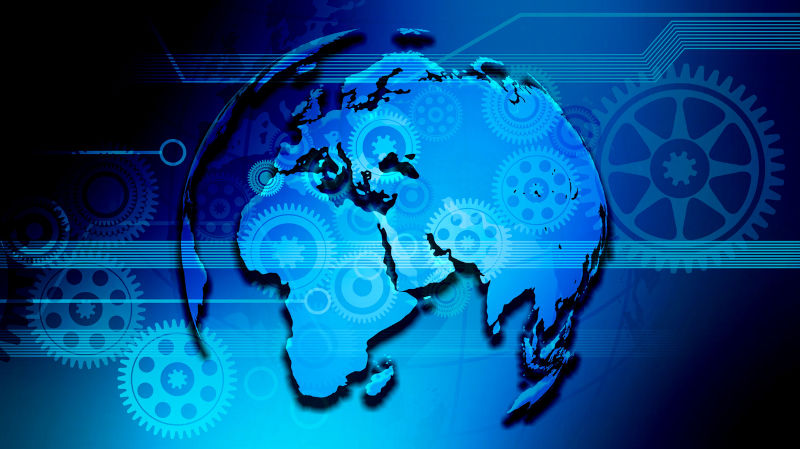Still waiting for the Asian Century? The world-system has moved on
May 17, 2025
Dr Allan Patience’s recent essay, “Australia’s misunderstanding of the Asian Century”, is a wake-up call we can no longer afford to ignore.
With clarity and force, he shows how Australia has misread the shift in global power – failing to grasp that the so-called “Asian Century” was not a future prospect in 2012, but a lived reality for decades prior.
But if we want to understand how deep this misunderstanding goes — and why it persists — we must look beyond the surface of policymaking and dive into the underlying world-system that structures global power. The frameworks of Immanuel Wallerstein and Giovanni Arrighi help us do just that.
Australia as semi-periphery
Wallerstein’s world-systems theory divides the globe into a core, a periphery and a semi-periphery. Australia has long sat in that semi-peripheral space — prosperous, but dependent; wealthy, but rarely sovereign in the structure of global decision-making. Our economic model — exporting raw materials and importing capital, technology and ideas — reflects this position.
Dr Patience shows how we have been content to remain “shockingly ignorant” of the languages, cultures, and histories of our own region. This is not simply a cultural failing – it is a structural one. As Wallerstein would argue, Australia has tethered its identity to the Anglo-American core, refusing to see that the centre has moved.
Hegemony on the wane, a region on the rise
Giovanni Arrighi charted the historical rise and decline of great powers. In his model, the US, like Britain before it, is entering the terminal phase of its hegemonic cycle – characterised not by productive innovation, but by financialisation, military overreach and domestic decay.
Dr Patience rightly observes that the Trump presidency was not the cause, but the symptom of America’s decline. The idea that liberal capitalism had triumphed, as declared by Francis Fukuyama, has proved as empty as the collapsing confidence in American democracy. AUKUS and Pine Gap don’t look like grand strategy anymore – they look like relics of dependency.
Arrighi would remind us that while old empires falter, new ones rise, not just in military or economic terms, but in how they reshape the global order. China’s transformation — economically, technologically, diplomatically — is not simply about becoming “number one". It is about displacing the very terms of global power. The shift is systemic, not symbolic.
Delusions of security, failures of imagination
Dr Patience critiques Australia’s strategic posture: a stubborn loyalty to the US, framed as realism, but grounded in delusion. He echoes Paul Keating’s call that we must find our security in Asia, not from it.
World-systems theory helps explain why our elites cling to failing hegemonies: because they fear losing their place in the world’s power hierarchy. But in doing so, they may ensure our irrelevance. As Arrighi saw in the late phase of US dominance, military alliances grow more symbolic and brittle, while capital flows increasingly bypass traditional centres.
Australia is not adapting to this shift – it is resisting it. We double down on security pacts while divesting from Asian language education. We fund submarines instead of school exchanges. As Dr Patience argues, our universities, diplomatic corps and media need a revolution in how they relate to Asia – not through fear, but through knowledge, respect, and regional belonging.
Tasks for a nation in transition
Australia must move from being a passive observer to an active participant in shaping the post-American world. This means:
- Educational reform: As Dr Patience insists, we need early, sustained and culturally grounded language education – not only in Mandarin, but in Bahasa Indonesia, Hindi and Vietnamese. Language is not just skill – it is orientation.
- Strategic realignment: We must develop a regional security architecture that includes ASEAN, the Pacific Islands and, yes, even China. Not to deny tensions – but to manage them as neighbours, not vassals.
- Economic transformation: We must break from extractivism and develop regional value chains in green industry, digital infrastructure and cultural exchange. Following Arrighi’s model, now is the time to shift from rentier dependence to productive innovation.
- Cultural Reframing: We must stop imagining ourselves as a Western outpost and instead embrace a layered identity – deeply Australian, and fully Asia-Pacific.
Not a pivot – A return
Dr Patience closes with a call for Australians to live knowledgeably and respectfully in a cosmopolitan Asia. That is not a pivot. That is a return to reality.
In the great historical shifts Wallerstein and Arrighi tracked, those who recognised the transition early could shape it. Those who clung to the past fell behind, clinging to treaties and memories. The Asian Century isn’t coming. It’s here. And the world-system has already moved on.
Will Australia?
